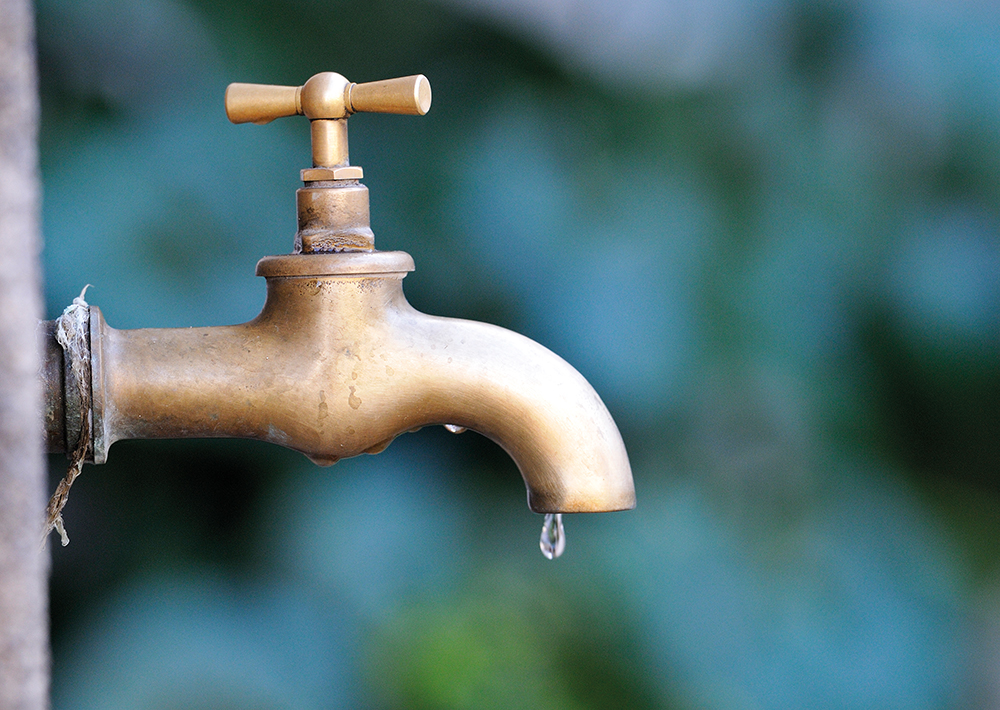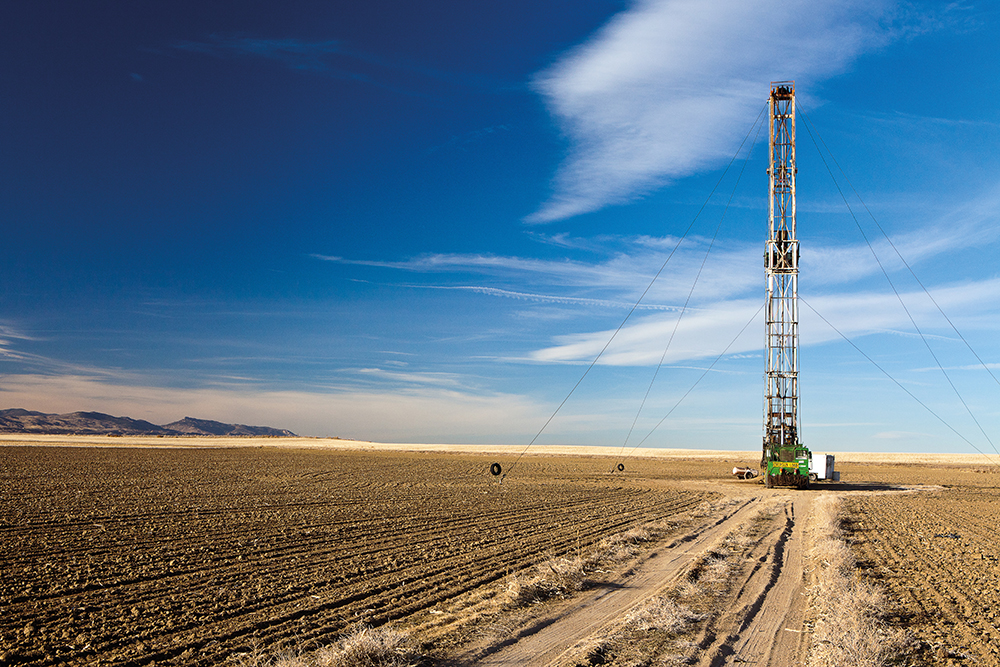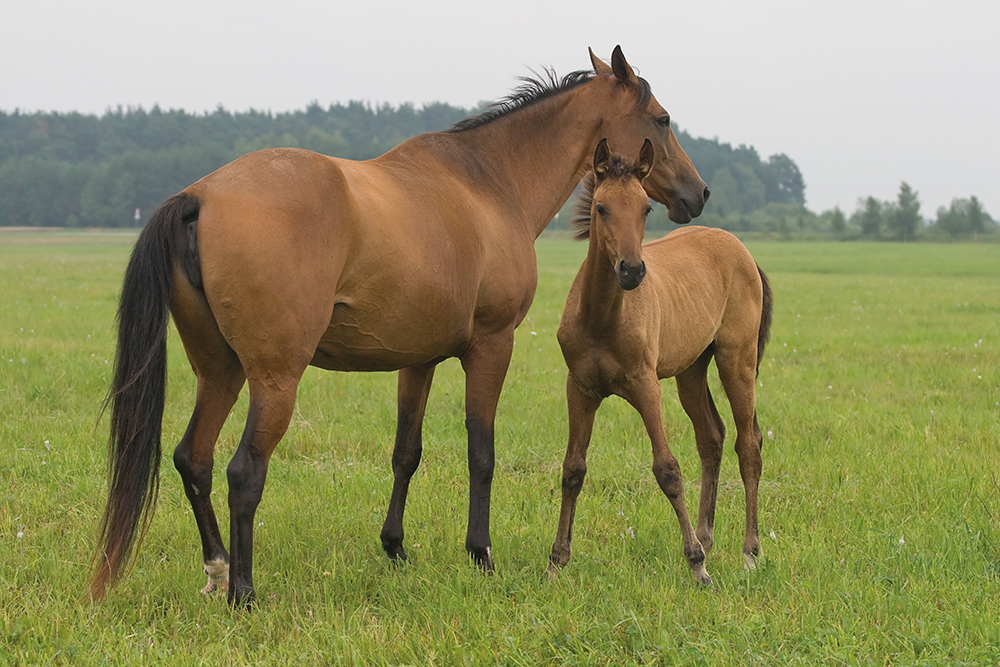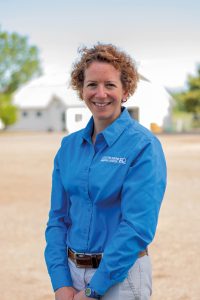Dr Kathleen Mullen – Links Between Fracking and a Rare Birth Defect in Racehorses
Fracking has long been controversial for its potential to contaminate local water sources and cause damage to the environment. Dr Kathleen Mullen at Littleton Equine Medical Center in Colorado and her team have carried out novel research into how fracking in close proximity to a horse-breeding farm may be the cause of a specific birth defect in the foals born there. Her findings may be relevant to human babies and considerations of the implications of fracking on long-term health.
Fracking in the USA
Between the layers of the sedimentary rock, shale, natural shale gas can be found in areas called shale plays. Over millions of years, the shale rock is formed by layers of mud build-up compressing the levels below. If this rock is heated to 100˚C, which happens at least 2 km below the surface of the earth, shale gas is produced from the organic material. The layers are non-permeable, which means that gas cannot pass through, trapping it deep below the ground.
Shale gas is extracted using unconventional natural gas development (UNGD) methods, including horizontal drilling and hydraulic fracturing, commonly known as fracking. Horizontal drilling involves drilling a deep hole vertically into the shale formation, then horizontally to allow access to more gas reserves. This well is then filled at high pressure with fracking fluid made up of mostly sand and water, but also chemicals that prevent well corrosion and microorganisms from growing. The newly formed fractures in the rock allow the shale gas to escape upwards and it is captured in collection wells. The gas can then be processed and piped away, and the fracking fluid is collected and treated to remove contaminants.
The hydrocarbon methane makes up a majority of this natural gas. It has domestic uses, such as fuel for vehicles, heating, cooking and electricity, as well as being a component of plastic manufacturing. First extracted in Fredonia, New York in 1825, shale gas went on to make up a majority of natural gas produced in the USA after large-scale operations started in Texas in the 1980s. Its varied benefits made it appealing for investment in the USA.
Combatting climate change is becoming increasingly important. Supporters of UNGD argue that burning shale gas produces significantly fewer greenhouse gases than other non-renewable sources of energy. Some studies have found that, per unit of energy released, combustion of natural gas releases half as much carbon dioxide than coal combustion. This means that it burns ‘cleaner’ than coal or oil because less carbon dioxide, nitrogen oxide, sulphur dioxide is emitted into the atmosphere. Local economies can also benefit from UNGD as employment opportunities are produced during a time when other non-renewable energy jobs are reducing.

The Downside of Fracking
Although fracking has positives, it is also highly controversial due to its potential to cause environmental damage and disruption. Areas where UNGD takes place may experience higher levels of noise pollution and road traffic and a significant amount of space is needed for the operation. The risk of earthquakes slightly increases however, mild tremors are more common. For these reasons, house prices have been known to fall surrounding new fracking sites.
One of the biggest risks of fracking is air and water contamination. Burning shale gas gives off pollutants such as polycyclic aromatic hydrocarbons (PAHs). PAHs are carcinogens, which means they can cause cancer, but they may also result in other health issues. If cracks form within the borewell or a spill occurs, wastewater could leak into the local water supply, creating huge health implications.
Around 350 of the 630 chemicals used in fracking fluid are known to be bad for your health. Exposure to these contaminants in the soil, water supply and air has adverse effects on asthma sufferers, people with cardiovascular issues and pregnant women. Particularly concerning is the link between proximity to a fracking site and new-born complications. Lighter babies, developmental issues, congenital defects and premature births are all associated with prenatal PAH exposure.

Exposure to Polycyclic Aromatic Hydrocarbons in Pregnant Horses
In 2014, while working at Cornell University Hospital for Animals as a veterinarian, Dr Kathleen Mullen and her colleagues diagnosed five foals with a birth defect called dysphagia from the same racehorse breeding farm in Pennsylvania, USA. What made this particularly interesting is that only ten foals were born that year and dysphagia is so rare, normally less than 1% of foals are born with it. Between 2012 and 2014, nine out of twenty-four foals born there had the defect.
Dysphagia is the inability or difficulty to swallow in horses. It can be acquired during adulthood, but in these foals, it was due to a congenital birth defect, meaning it had been present since birth. There are various reasons why foals may struggle to swallow its mother’s milk including structural abnormalities such as cleft palate and functional abnormalities such as neuromuscular dysfunction. In this case, they found that the foals had no structural abnormalities present and they appeared more subdued than normal foals – lower mentation (mental activity). For these reasons, they suspected a congenital neurological disorder. Instead of ingesting the milk properly, the foals inhaled it, which is known as tracheal milk aspiration. As well as preventing the foals from getting much-needed nutrients, inhaling milk can result in bacteria growing in their lungs, leading to pneumonia.
The owners of the farm in Pennsylvania also own a horse farm in New York, USA. The NY farm had not experienced a single case of dysphagia in ten years. Both farms sourced their hay and grain from the same place, but crucially, their water and pasture differed according to their location.
Dr Mullen and her team noted that there were 28 fracking wells within 10 km from the Pennsylvania farm and two of them were less than 500 m from the water wells that supply water to the horses. However, in New York, the process of fracking is banned and so there was no fracking activity surrounding the second farm.
As a result, the team hypothesised that the UNGD operations and consequent chemical exposure around the Pennsylvania farm were linked to the foals being born with birth defects. They believed that this may be an important example of how fracking may result in adverse health effects, perhaps even in human babies. The study the team conducted was the first to measure PAH levels in the air and water throughout a mare’s pregnancy.

Testing the Water
Between 2014 and 2016, the team set out to discover whether their suspicions were correct. The mares and foals in both the Pennsylvania and New York farms were given physical examinations and had blood samples taken frequently. Their food, water and grazing soil were also tested for known toxic chemicals such as heavy metals and mycotoxins recurrently. Continuous passive sampling of the air and water was also carried out for PAHs. This is done by a collecting device constantly gathering samples of the medium it is placed in and testing for a specific compound. Lastly, the foals were evaluated for whether or not they had dysphagia.
Discovering the Link
Throughout the study, 65 foals were born, 17 of which were dysphagic. All 17 of these horses were born on the farm in Pennsylvania. The likelihood of a foal being born with dysphagia increased for every month their mother resided there while pregnant but mares who spent the first half of their gestation in Pennsylvania then moved to New York never had a dysphagic foal. They also found that males were more likely to have the defect than females.
After analysing the water samples, the team found that concentrations of the PAHs 3,6-dimethylphenanthrene, fluoranthene, pyrene and triphenylene were higher in Pennsylvania than in New York. However, partway through the study, the Pennsylvania farm installed a water filtration and treatment system for the horses’ drinking water. The outcome of this was the concentrations of PAHs became the same or lower than those in New York. Dr Mullen continued to observe new-borns in Pennsylvania for two more years and found none of the 29 foals born had dysphagia after water treatment was put in place.
In a subsequent study, Dr Mullen found that the athleticism of a horse, determined by various factors associated with their ability to race, was not negatively impacted by a dysphagic past.

What Does This Mean?
Dr Mullen’s work has given a critical insight into how UNGD may impact the surrounding environment and the organisms living there. She suggests that foals born within proximity to fracking sites are more likely to exhibit dysphagia, likely due to altered neurological functions. Because foals did not show dysphagia when their mothers moved away from UNGD sites after their first trimester, Dr Mullen determined that the negative effects are more impactful during mid- to late-gestation.
As PAHs can cross the placental barrier and can also be found human breast milk, Dr Mullen believes her research with horses can serve as a model for humans. PAHs can cause DNA damage, perhaps leading to neurodevelopment problems in babies, just like in the foals.
Considering the potential health implications for humans as well as animals, Dr Mullen explains that continued research is important so that we can further understand how unconventional natural gas development may alter the lives of those who reside close by.
Reference
https://doi.org/10.33548/SCIENTIA621
Meet the researcher

Dr Kathleen Mullen
Littleton Equine Medical Center
Littleton, CO
USA
Dr Kathleen Mullen completed all three of her degrees at Cornell University in Ithaca, New York. She holds a Bachelor of Science in Animal Science, a Master of Science in Agricultural Economics and a Doctorate in Veterinary Medicine. After working as an associate at a large animal ambulatory practice in Central Massachusetts, she returned to Cornell University where she held a residency and then an instructorship of Large Animal Internal Medicine. As well as teaching veterinary students at Cornell and in Haiti, Dr Mullen has presented and published her research in multiple veterinary journals. She now works at Littleton Equine Medical Center in Colorado, where she practises as a veterinarian in addition to her research.
Contact
E: kmullen@littletonequine.com
W: https://littletonequine.com/katie-mullen-bio/
Key Collaborators
Dorothy M. Ainsworth, Cornell University College of Veterinary Medicine; Oregon State University, College of Agricultural Sciences, Food Safety and Environmental Stewardship Program
Funding
National Institute of Environmental Health Sciences Grant Number: R21ES026398
Further Reading
B Delvescovo, KR Mullen, SW Eicker, R Ivanek, DM Ainsworth, The effect of neonatal dysphagia on subsequent racing performance in Standardbred horses, Equine Veterinary Journal, 2020, 00, 1–7.
KR Mullen, BN Rivera, LG Tidwell, R Ivanek, KA Anderson, DM Ainsworth, Environmental surveillance and adverse neonatal health outcomes in foals born near unconventional natural gas development activity, Science of the Total Environment, 731, 138497.
Want to republish our articles?
We encourage all formats of sharing and republishing of our articles. Whether you want to host on your website, publication or blog, we welcome this. Find out more
Creative Commons Licence
(CC BY 4.0)
This work is licensed under a Creative Commons Attribution 4.0 International License. 
What does this mean?
Share: You can copy and redistribute the material in any medium or format
Adapt: You can change, and build upon the material for any purpose, even commercially.
Credit: You must give appropriate credit, provide a link to the license, and indicate if changes were made.
More articles you may like
Grandmothers: Innovation Through Tradition
Grandmother Project – Change through Culture (GMP) is an organisation dedicated to documenting the role of grandmothers and demonstrating the effectiveness of grandmother-inclusive strategies in improving the health and well-being of women, children, and adolescents. GMP’s groundbreaking work challenges conventional wisdom to transform community-based interventions in Africa and beyond, harnessing a powerful but often overlooked resource: the wisdom and influence of grandmothers.
Dr Robert Larkin | Cultivating Change to Improve Soil Health and Increase Potato Yield
Environmental quality and food production are facing the pressing challenges of climate change and global population growth. Dr Robert Larkin from the United States Department of Agriculture-Agricultural Research Service (USDA-ARS) and a team of plant scientists developed and tested a range of crop management systems to help overcome these compounding challenges. Their work is improving soil health and increasing the yield of potato crops, contributing to the future food security of nations.
Professor Giorgio Buttazzo | Artificial Intelligence and a Crossroads for Humanity
Where do we stand with artificial intelligence? Might machines take over our jobs? Can machines become conscious? Might we be harmed by robots? What is the future of humanity? Professor Giorgio Buttazzo of Scuola Superiore Sant’Anna is an expert in artificial intelligence and neural networks. In a recent publication, he provides considered insights into some of the most pressing questions surrounding artificial intelligence and humanity.
Dr Ralf Adam | New Technologies Shaping the Future of Oral Hygiene
Understanding the efficiency of various toothbrush technologies is essential for achieving optimal oral health. Dr Ralf Adam, who leads a dedicated team at Procter & Gamble in Germany, is keen to investigate the complexities of these technologies. His team have provided new insights into the best toothbrush types for plaque removal and the maintenance of gum health. By highlighting the importance of informed oral care decisions and ongoing investigations, this vital research works towards ensuring everyone can achieve a brighter, healthier smile.




